She stopped to look out at the landscaped gardens, at the vistas of lakes and ponds and curving bridges stretching into the distance, laid out to make a succession of exquisite pictures. On the far side of the gardens was the wall that separated the men’s and women’s palaces and behind it the soaring roofs of the Middle Interior. Somewhere far beyond that was the Outer Palace where the clan lords came to pay homage and the shogun held court …
The Shogun’s Queen
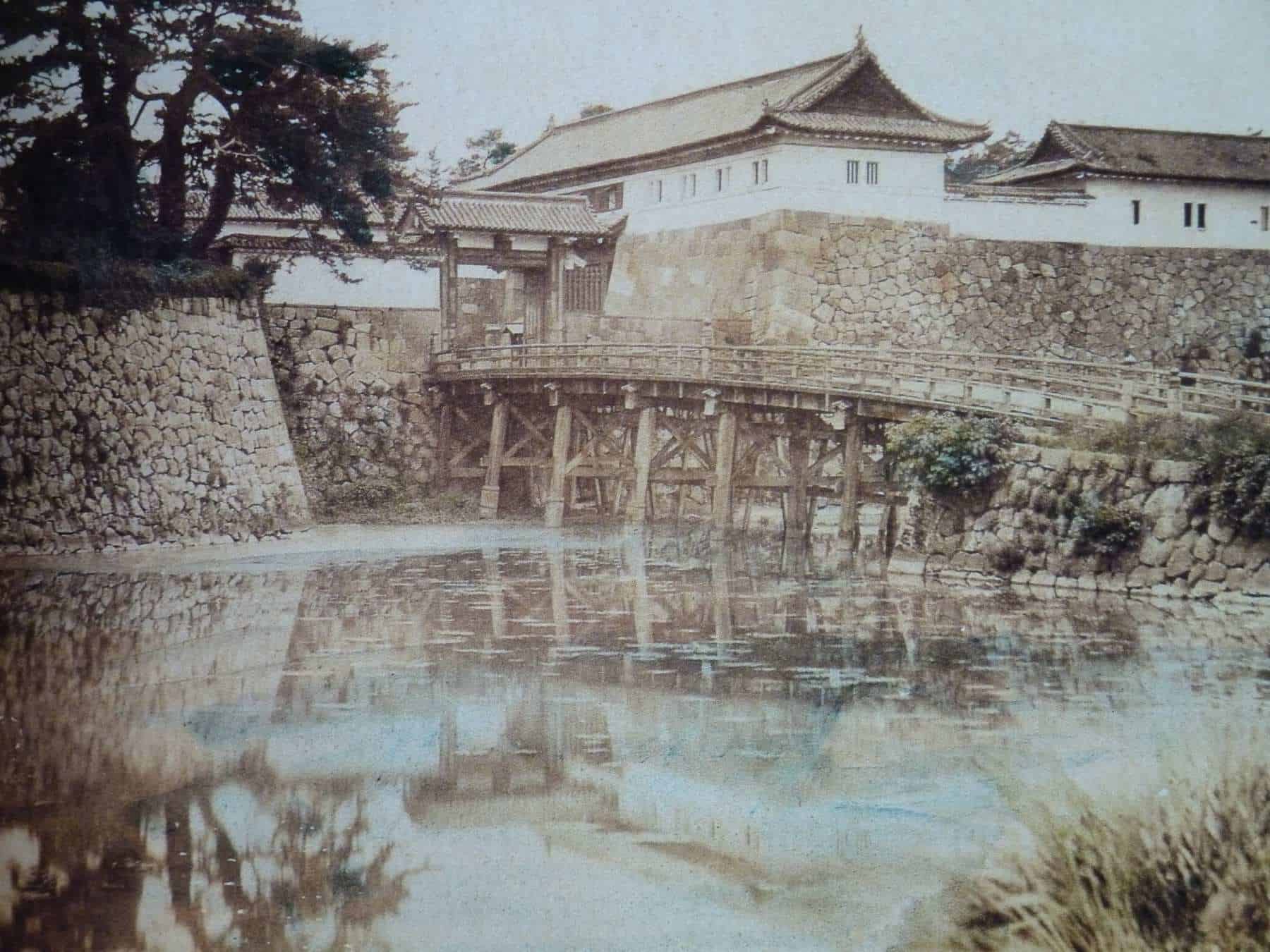
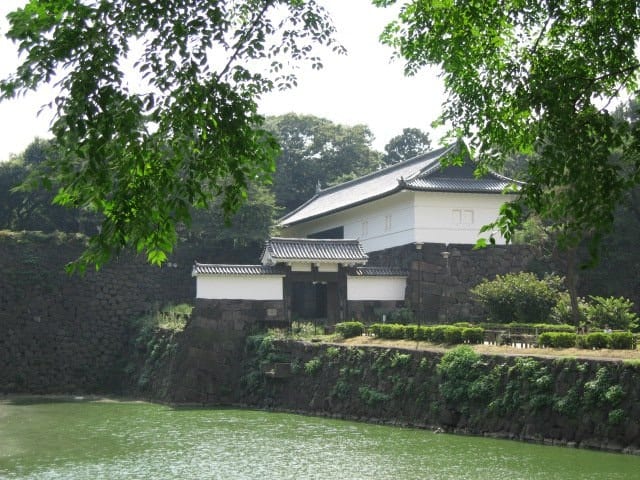
Edo Castle was like Louis XIV’s Versailles, a place of fabulous riches, of unimaginable beauty and luxury. Its mammoth granite battlements and gleaming roofs towered above the great city of Edo, the largest city in the world – which we now call Tokyo.
An enormous complex of buildings a mile across and four miles in circumference, it was like Buckingham Palace, 10 Downing Street and the Houses of Parliament rolled into one. It was where the shogun – the military governor – lived and, with the help of an army of government officials, ruled the country.
Inside the mammoth walls were three palaces – the Outer Palace where the shogun gave audiences; the Middle Palace where he lived with his male attendants; and the vast Inner Palace, the Women’s Palace, cut off from the other buildings by a solid wall which sliced right through the complex. In this wall there was just one door which only one man could step through – the shogun.
Inside were rank upon rank of elegant white-walled buildings with dove grey roofs, linked by walkways with delicately fretted wooden railings. All around were landscaped gardens, large and small, with tinkling waterfalls and ponds full of leaping orange and gold carp.
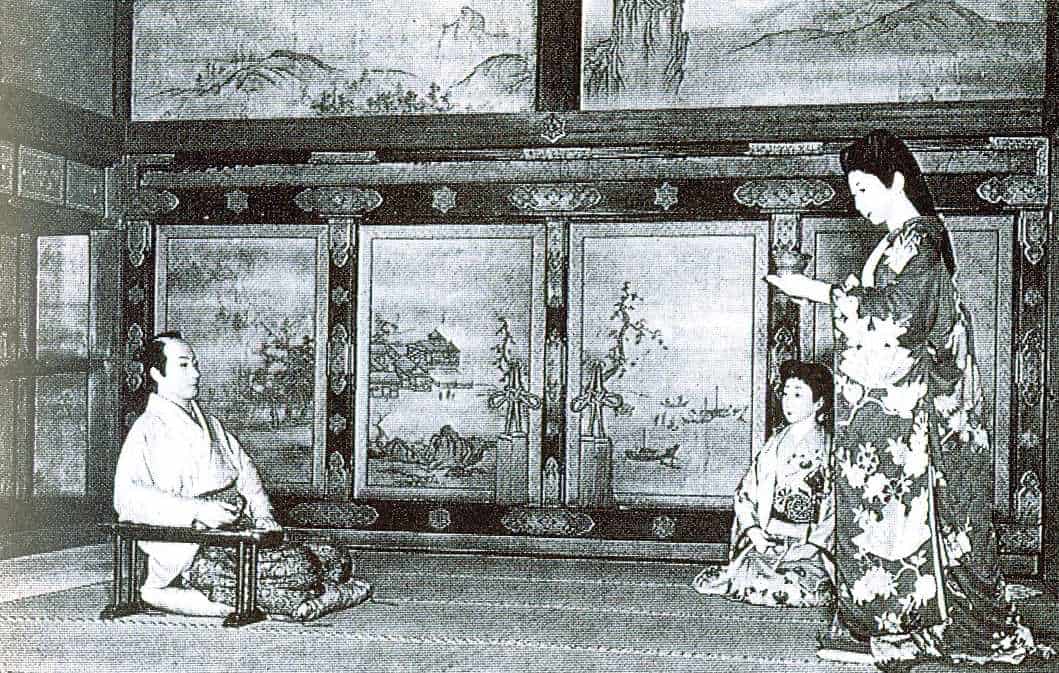
Three thousand women lived here, sweeping through the corridors and across the great halls in elaborate kimonos, wafting perfume. Like all adult women in Japan at that time they painted their teeth black, shaved their eyebrows and smudged in feathery charcoal ‘moth wing’ eyebrows high on their foreheads. They powdered their faces stark white, painted their lips with red safflower paste and wore their hair in great oiled, coiled, perfumed loops.
Their days were spent in endless leisure. In summer they held tea ceremonies on the stages besides the lake, went boating in red-lacquered pleasure barges or had poetry-writing competitions in one of the moon-viewing pavilions. In winter they played the incense guessing game or the shell matching game or performed plays and masques. They feasted under the cherry blossoms in spring and performed graceful dances at the height of summer.
But life was not all pleasure. There was a serious purpose to the palace.
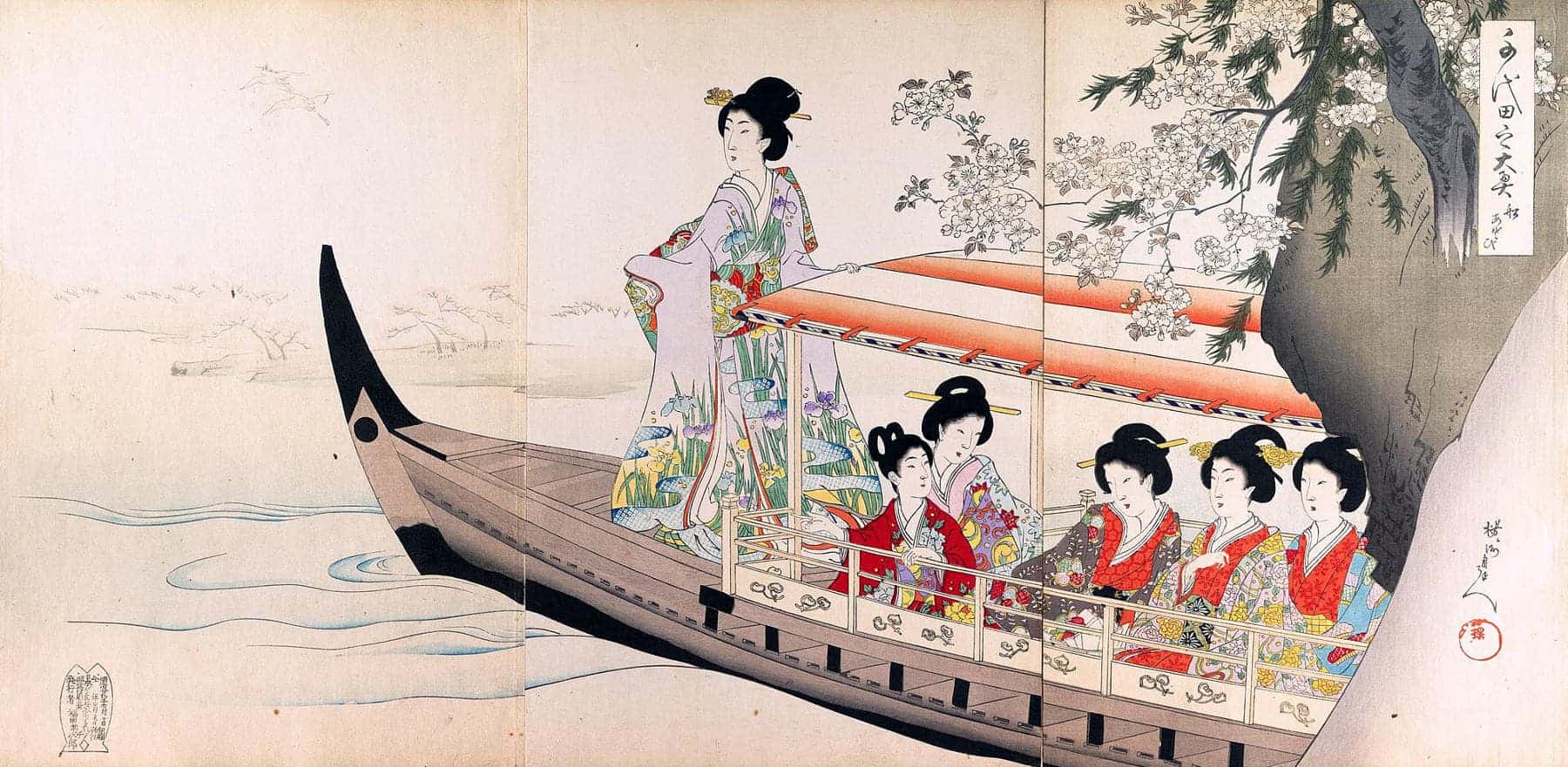
[CC0], via Wikimedia Commons
For him the Women’s Palace was his home. In the men’s palaces he was surrounded by plot and intrigue and rival courtiers jostling for position. In the Inner Palace, among his womenfolk, he could relax.
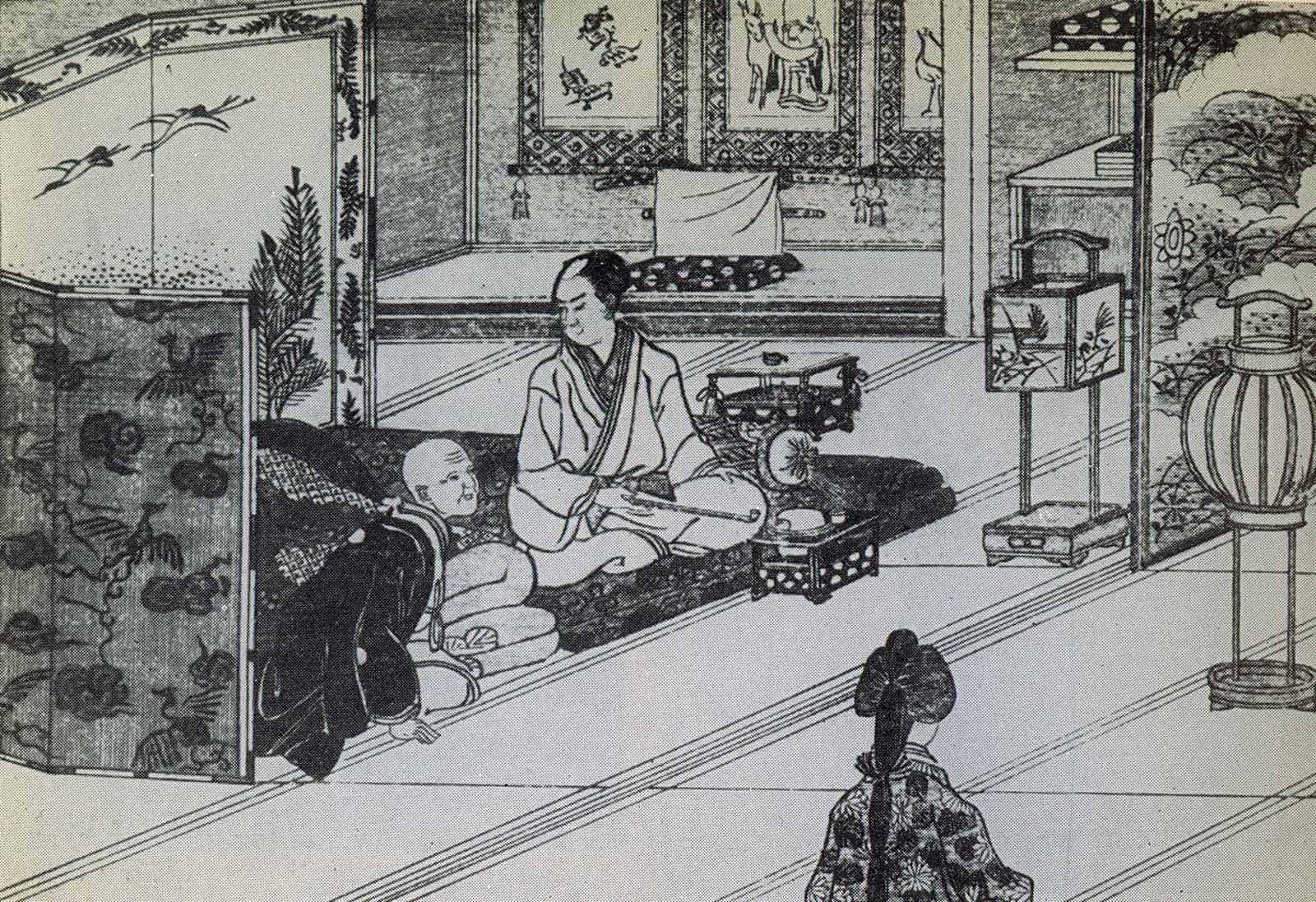
But life was not so relaxing for the women. As they knelt waiting to greet the shogun, the words that all the younger women hoped to hear were, ‘What is her name?’ This was the code that meant they had caught the shogun’s eye and he wished to spend the night with them.
For the real purpose of the palace was to make sure that the shogun had an heir and that any child born there was his son and no one else’s.
The women all wanted their child to become the next shogun and as a result there was endless backbiting, jealousy and sometimes murder. Some babies were smothered at birth to make sure they didn’t supplant another woman’s son.
This was the gilded cage that my heroine Princess Atsu found herself in when she arrived in the Women’s Palace. I tell her poignant and tragic story in The Shoguns’ Queen.
First published in the lovely Mairead Hearne’s wonderful blog, swirlandthread.com
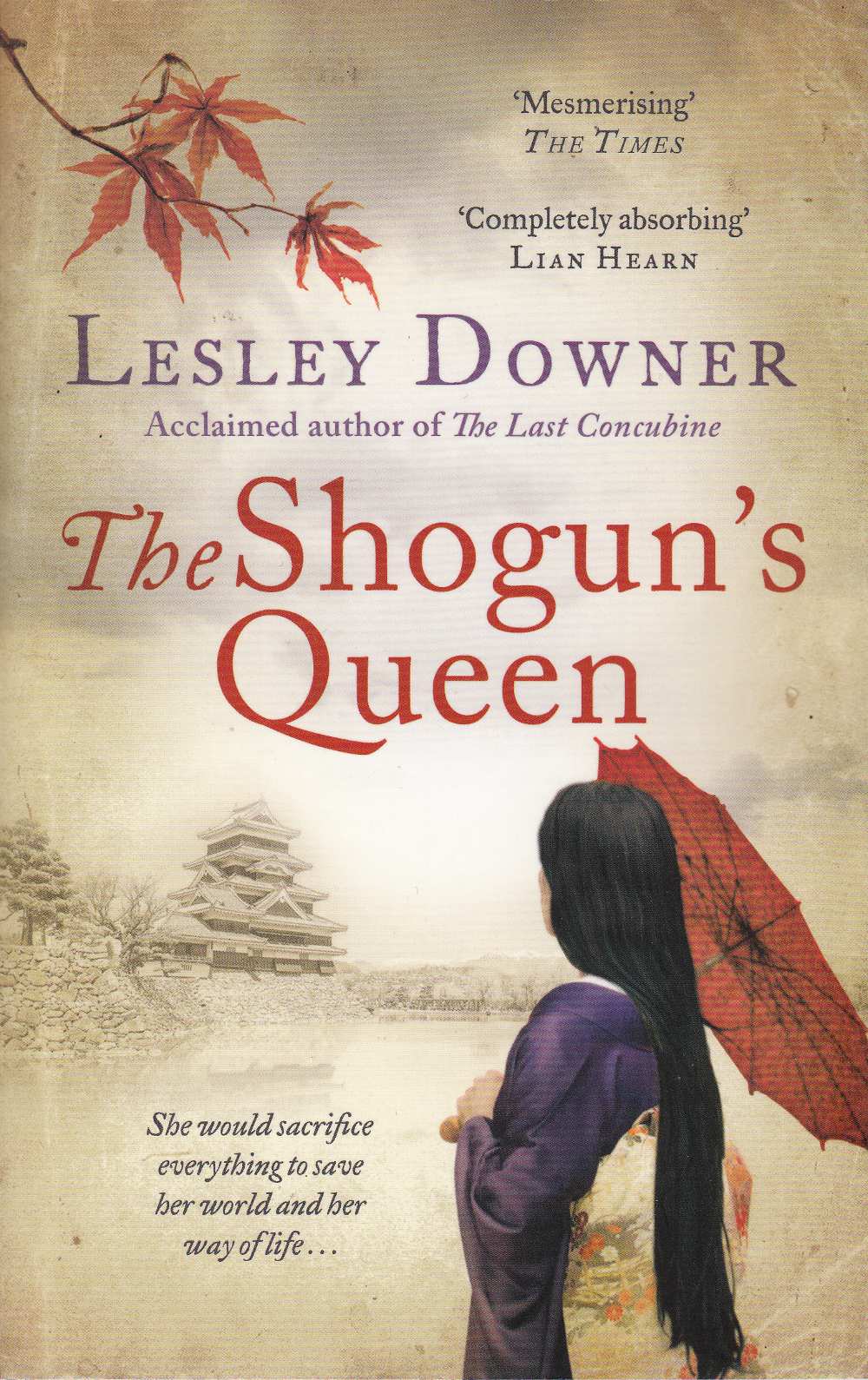
Amazon.co.uk
Review of The Shogun’s Queen by Mairead Hearne
“The Shogun’s Queen is a monumental novel about a time in history many of us have only scant knowledge of.
It is a wonderful work of historical fiction and to be honest I am not quite sure I have sufficient adjectives to describe it’s ability to transport the reader to a period of such fascinating beauty and a time of such a tumultuous history.
Every so often you pick up a book and savor every single word. The decision is made that you have in your hand a book that cannot be rushed. The Shogun’s Queen had all these qualities and more that I love in a book. I relished the five minutes I got to read a few pages and made sure not to miss a line. […]”